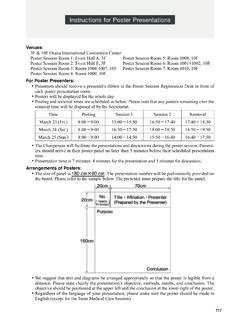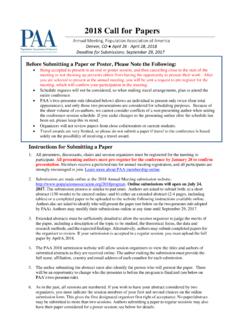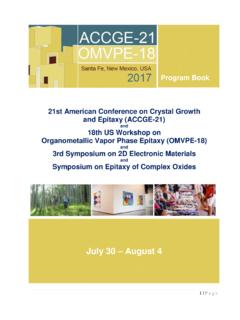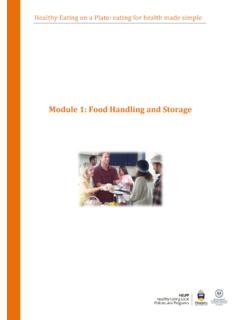Transcription of Poster Instructions - American Psychological …
1 American Psychological InstructionsUPDATED MARCH 2018 Your paper has been scheduled in a Poster session during the annual convention of the American Psychological association this year. By facili-tating informal discussions between presenters and their audience, Poster sessions provide a more intimate forum for exchange than do regular paper presentations. Ideally, a well-constructed Poster will be self-explanatory and free you from answering obvious questions so that you are available to supplement and discuss particular points of interest. Successful Poster presentations are those which achieve both coverage and you provided all the obvious information? Will a casual observ-er walk away understanding your major findings after a quick perusal of your materials? Will a more careful reader learn enough to ask informed questions?In addition to a title/author label and abstract, most successful post-ers provide brief statements of introduction, method, subjects, pro-cedure, results and conclusions.
2 Ask yourself, What would I need to know if I were viewing this material for the first time? And then state the information the sequence of information evident? Indicate the ordering of your material with numbers, letters or arrows, when necessary. Is the con-tent being communicated clearly? Keep it simple. Place your major points in the Poster and save the non-essential, but interesting side-lights for informal discussion. Be selective. Your final conclusions or summary should leave observers focused on a concise statement of your most important boards mounted on stands will be provided by APA and placed in the designated hall. Your place among the Poster boards will be indicated by the number listed next to your paper in the Convention Program, , A-1, A-2, etc. Participants should plan to place their materials on the Poster board during the ten minutes immediately preceding the hour when the Poster session is boards provided for Poster sessions have uncovered cork-board surfaces.
3 Thumbtacks will be available in the room. Materials must be removed from the Poster board at the end of each Poster session. Poster sessions must end promptly at 50 minutes after the hour in order to provide the time for individuals in the next Poster session to set up their least 50 copies of your complete paper should be available for dis-tribution to interested persons. Copies of your paper and all illustra-tive materials must be prepared before the convention. If necessary, local copy centers can provide reproductive or graphic services at the meeting. Electrical outlets, projection equipment and tape recorders will not be provided in the Poster session room. All graphics are to be displayed on the Poster board. You may find it useful to have on hand a tablet of sketch paper and suitable drawing materials to assist in your explanations to observers. Please note that it is not possible to write or paint on the Poster boards.
4 RequirementsThe Poster board surface area is 4 (122cm) high and 6 (183 cm) wide. Prepare a label indicating (a) the title of your paper and (b) the author(s) for the top of your Poster space. The lettering for this section should not be less than 1 ( cm or 72 point) high. A copy of your abstract (300-words or less), in large typescript, should be posted in the upper left-hand corner of the Poster board. Do not mount illustrations on heavy board because these may be difficult to keep in position on the Poster board. Bear in mind that your illustrations will be viewed from distances of 3 (113 cm) or more. All lettering should be at least 3/8 (.95 cm or 27 point) high, preferably in a bold font, or if hand-lettered, written with a regular felt-tip pen (not fine-point). Be sure to provide a clear label for each section of your up Poster 10 minutes before session title/author label with lettering at least 1 ( cm or 72 point) high for the top of your Poster an abstract (300-words or less) with lettering at least 3/8 (.)
5 95cm or 27 point) high for the upper left-hand corner of your clearly the sections and sequence of your materials. Keep it at least 50 copies of your paper with you for distribution. Re-move Poster 10 minutes before the hour in which the next session is scheduled to Psychological Poster ArrangementsTITLE OF PAPERNAME(S) OR AUTHORS(S)6'4'ABSTRACTINTRODUCTIONMETHOD TABLE 1 RESULTSFIGURE 1 TABLE 2A-16'4'TITLE OF PAPERNAME(S) OR AUTHORS(S)ABSTRACTINTRODUCTIONMETHODTABL E 1 RESULTSFIGURE 1 TABLE 2A-2 TITLE OF PAPERNAME(S) OR AUTHORS(S)ABSTRACT6'4'INTRODUCTIONMETHOD RESULTSA-3 TABLE 2 TABLE 1 FIGURE 1 CONCLUSIONS123
















